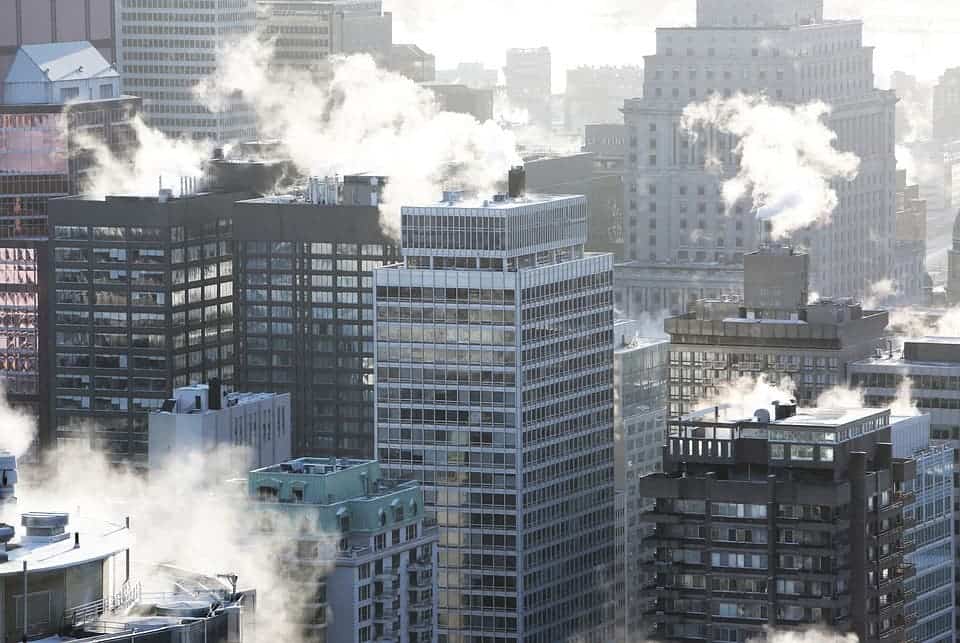Air pollution is driving up the number of cases of emphysema, a condition in which destruction of lung tissue leads to wheezing, coughing and shortness of breath.

Dirty air just isn’t that good for you. New research led by the University of Washington, Columbia University, and the University at Buffalo comes to report on a new way that air pollution impacts your lungs. The study shows that long-term exposure to all major air pollutants — especially ozone pollution, which is increasing with climate change — is linked with higher incidence of emphysema, a condition in which destruction of lung tissue leads to wheezing, coughing and shortness of breath.
As bad as smoking
“We were surprised to see how strong air pollution’s impact was on the progression of emphysema on lung scans, in the same league as the effects of cigarette smoking, which is by far the best-known cause of emphysema,” said the study’s senior co-author, Dr. Joel Kaufman, UW professor of environmental and occupational health sciences and epidemiology in the School of Public Health.
Living in an area with 3 parts per billion (ppb) higher ambient ozone levels for 10 years is roughly the equivalent of smoking a pack of cigarettes a day for 29 years, the team found, and is associated with the increase in emphysema. They also determined that ozone levels in some major U.S. cities are increasing by 3 ppb due in part to climate change. The annual averages of ozone levels in study areas were between about 10 and 25 ppb.
The findings are based on data from the Multi-Ethnic Study of Atherosclerosis (MESA) Air and Lung studies, an 18-year-long research effort that involved over 7,000 people, detailing the types and levels of air pollution they encountered between 2000 and 2018 in six metropolitan regions across the U.S.: Chicago, Winston-Salem, N.C., Baltimore, Los Angeles, St. Paul, Minnesota, and New York.
The team assessed the levels of air pollution participants encountered by collecting detailed measurements of exposure over several years in the six metropolitan regions. They also took measurements at the homes of many of the participants.
While most of the airborne pollutants are in decline due to successful efforts to reduce them, ozone has been increasing, the team reports. Ground-level ozone is mostly produced when ultraviolet light reacts with pollutants from fossil fuels.
Emphysema levels were measured from over 15,000 CT (computer tomography) scans that identify holes in the small air sacs of the participants’ lungs and lung function tests, which measure the speed and amount of air breathed in and out.
“Rates of chronic lung disease in this country are going up and increasingly it is recognized that this disease occurs in nonsmokers,” said Kaufman, also a professor of internal medicine and a physician at UW School of Medicine.
“We really need to understand what’s causing chronic lung disease, and it appears that air pollution exposures that are common and hard to avoid might be a major contributor.”
The findings are especially important, the team writes, as ground-level ozone levels are rising. The level of emphysema seen on the CT scans “predicts hospitalization from and deaths due to chronic lung disease,” said Dr. R. Graham Barr, professor of medicine and epidemiology at Columbia University who led the MESA Lung study and is a senior author of the paper.
All in all, it’s important that we continue efforts to scrub away air pollution from our homes and cities. At the same time, the authors say we need a better understanding of the ways air pollution impact our lungs, and more research into how we can prevent the diseases it causes.
The paper “Association Between Long-term Exposure to Ambient Air Pollution and Change in Quantitatively Assessed Emphysema and Lung Function” has been published in the journal JAMA.


